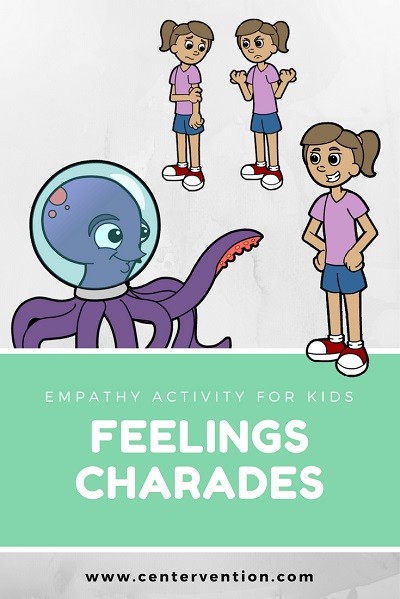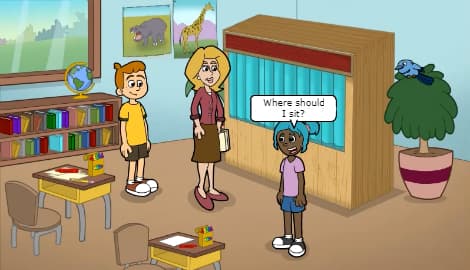This emotion charades for kids activity will help students identify different feelings and better understand how they, and others, may be feeling in a given situation. And with this understanding, they will be better able to respond with care and kindness.
In this activity, your students will act out different emotions and use clues to identify others’ emotions.
You may want to reference our list of emotions printable to assist your students with the words they will need to describe the emotions that are being acted out.

Recommended Grade Level: All
SEL Skill(s): Communication, Empathy
Duration: 35 minutes
Materials:
- Chalkboard, white board, or smartboard
- Slips of paper (optional)
Charades for Kids Lesson Instructions
Pre-Discussion:
Begin by talking with the group about the importance of recognizing other people’s feelings. Explain that understanding how another person is feeling is called empathy, and when we express empathy toward other people, we are showing that we care about them.
Invite discussion with these sample questions:
- Raise your hand if you can tell when another person is happy? How about when another person is mad? Scared?
- What are the clues that help you figure out what the other person is feeling?
Explain that we can tell a lot about how someone is feeling through their body language and facial expressions, without hearing them talk. In this game of Feelings Charades, just like regular charades for kids, the actor cannot talk. One student will act out an emotion word, and the rest of the group will guess the emotion.
Mini Game Directions:
- Invite students to come up with a list of emotions, and write them on the board. Try to have about the same number of enjoyable feelings (i.e. happy, excited) as uncomfortable feelings (i.e. frustrated, confused). Demonstrate how to act out one of the emotion words, and have the group guess.
- Ask a student to come to the front of the room and select one of the feeling words that is listed on the board. That child will then face the other group members and act out the emotion using facial and body expressions, while the other children try to guess which feeling it is. The child that correctly guesses the feeling will get to go next. (You may want to have students raise their hands to guess rather than calling out.)
- Put a check mark next to each word as it is used, and continue playing until all the words in the list have been acted out, or as many fit in your time frame.
Post-Discussion:
After completing a game, help students reflect on the activity by discussing some of the following questions:
- What cues did you use to guess what another person was feeling during the game?
- If it was easy at times, what helped make it easy? What made it challenging?”
Help children realize that it can be difficult to know what another person is feeling, especially when we don’t know the other person that well, or when that person is experiencing multiple emotions at the same time. Encourage students not to jump to a conclusion about someone else’s feelings. Explain that we can make educated guesses like we did in the game, but the best way to know and understand another person’s feelings is to ask him or her. Suggest the following responses.
“It seems like you may be feeling… , would you like to talk about it?”
Remind students that it is okay if the other person does not want to talk about their emotions, and that, as friends, we should respect that decision. Offer this suggested response for that situation:
“Okay, I understand. If you change your mind, just let me know.”
The goal is to communicate support and understanding.
Lesson Extension Using Zoo U
For students with access to our online SEL program, Zoo U, please make sure they explore scene 4 in the Communication skill builder.
In Scene 4, players work with another character to prepare for a puppet show. First, they’ll practice reading a script and matching tone of voice with a list of emotions. Next, they’ll assemble the puppets so that their body language and facial expressions match the emotions. Last, players will give and receive feedback.

